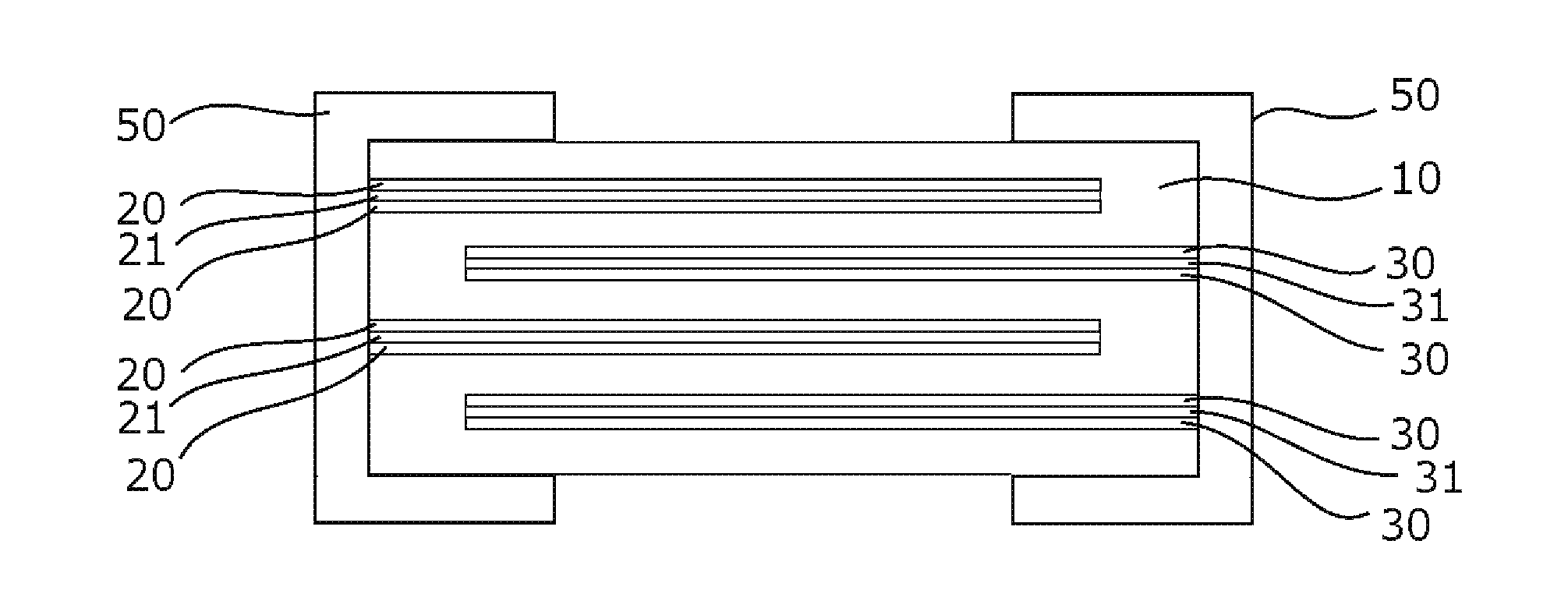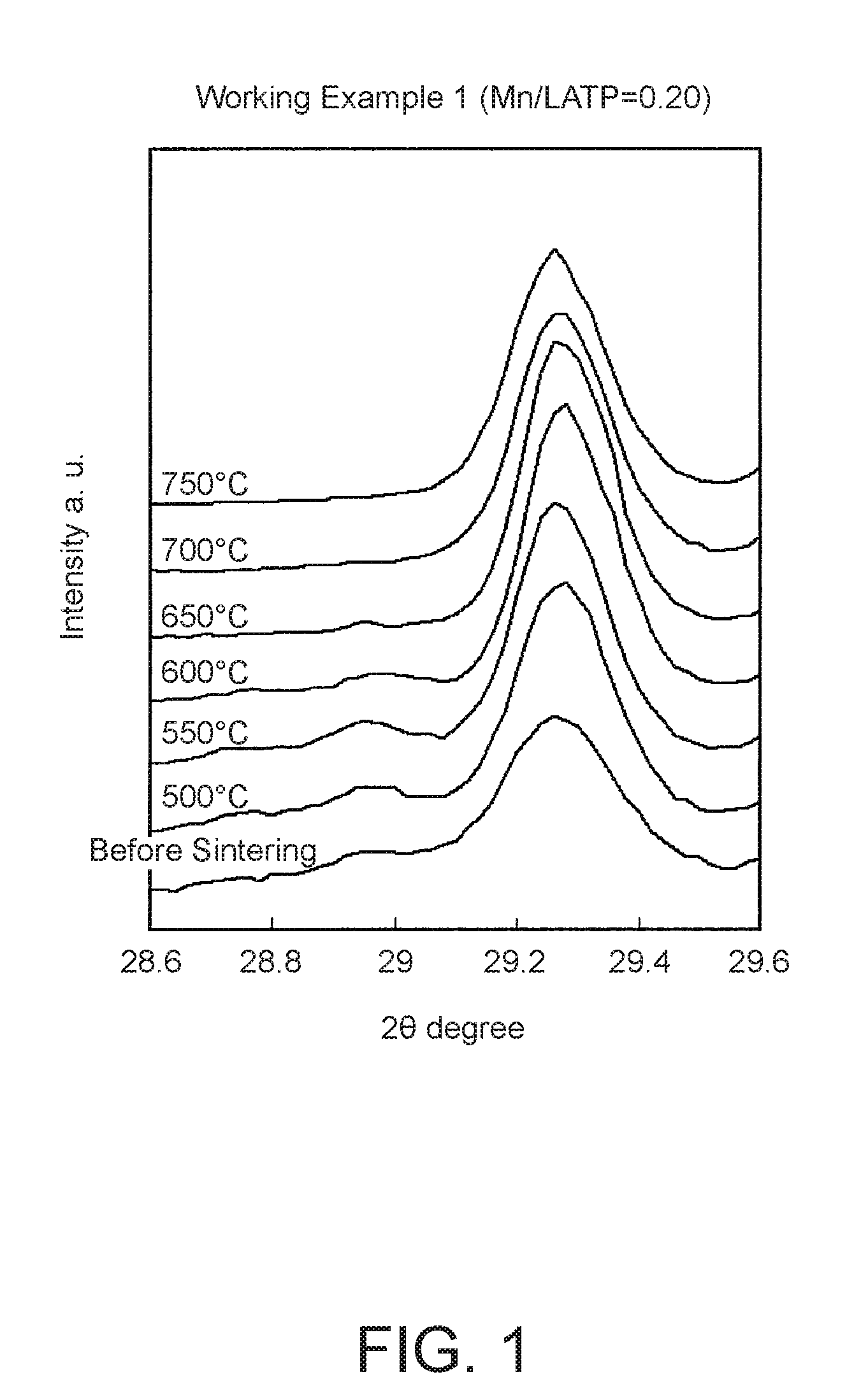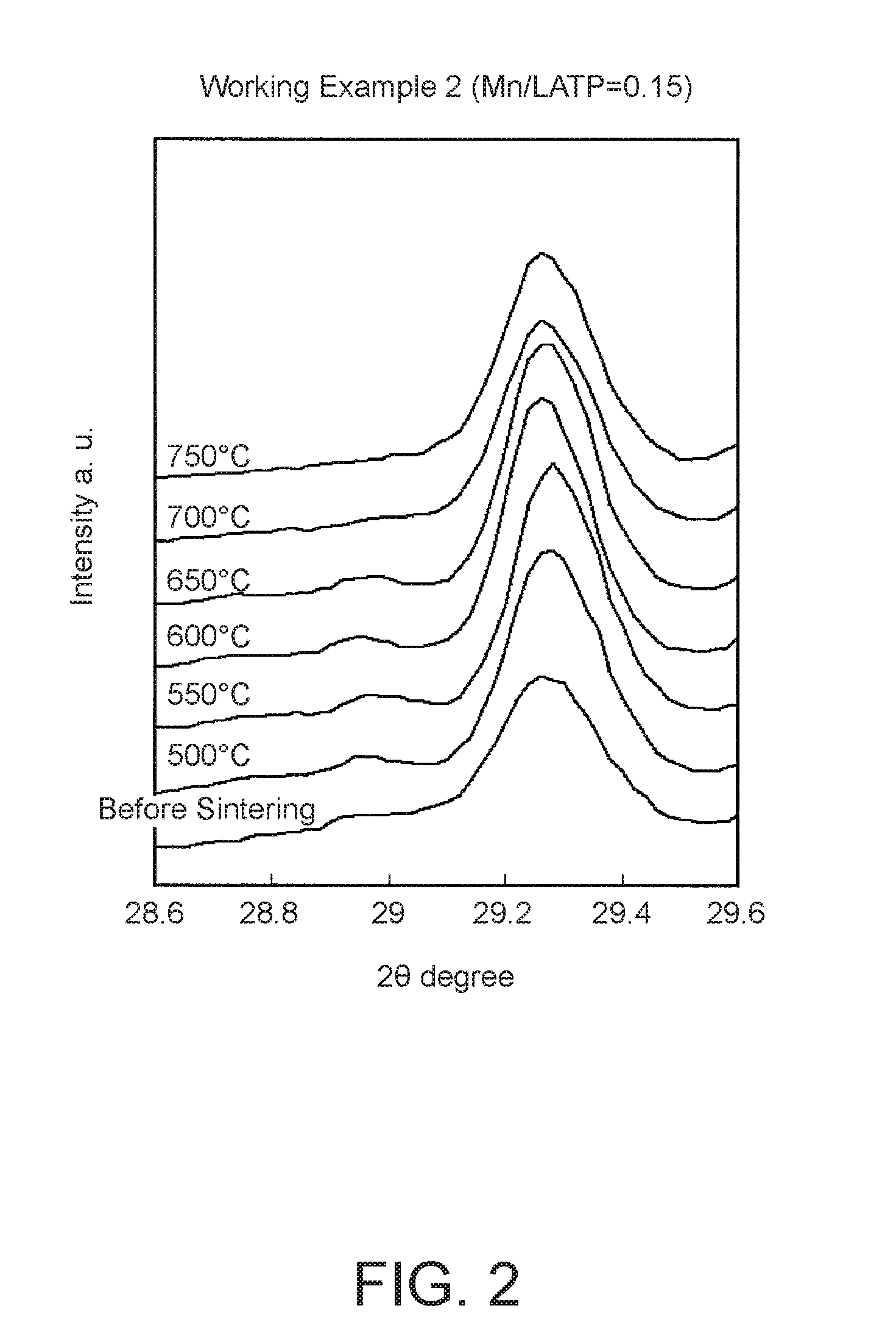All-solid-state secondary battery and method for manufacturing same
a technology of solid electrolyte and secondary battery, which is applied in the direction of sustainable manufacturing/processing, cell components, flat cell grouping, etc., can solve the problems of affecting charging/discharging, reducing altering so as to reduce the amount of active material, affecting charging/discharging, and affecting the properties of solid electrolyte
- Summary
- Abstract
- Description
- Claims
- Application Information
AI Technical Summary
Benefits of technology
Problems solved by technology
Method used
Image
Examples
working example 1
[0147]First, the starting materials Li2CO3, α-Al2O3, anatase TiO2, MnCO3, and NH4H2PO4 were mixed together in amounts appropriate for obtaining an oxide molar ratio of 0.65 LiO / 0.15 Al2O3 / 1.7 TiO2 / 0.2 MnCO3 / 1.5 P2O5 and pre-fired at 850° C. in air to cause a solid phase reaction. The resulting powder 2 was then crushed in a wet bead mill to a particle size distribution with D50=1 μm as measured by laser diffraction. This powder 2 was used as the Mn-LATP for the solid electrolyte. This powder was then evaluated using powder XRD. A diffraction peak indicative of a NASICON-type crystal structure was observed, and the powder was confirmed to be a single phase material.
[0148]
[0149]First, the starting materials Li2CO3, MnCO3, and NH4H2PO4 were mixed together in amounts appropriate for obtaining an oxide molar ratio of 0.5 Li2O / 1.0 MnCO3 / 0.5 P2O5 and pre-fired at 850° C. in air to cause a solid phase reaction. The resulting powder was then crushed in a wet bead mill to a particle size dist...
working example 2
[0156]The same experiments as in Working Example 1 were performed; however, the number of moles of manganese carbonate (MnCO3) added during preparation of the solid electrolyte was changed from 0.2 to 0.15.
[0157]
[0158]Powder mixture disks were produced and sintered using the same method as in Working Example 1. FIG. 2 shows the results of the XRD analysis after sintering. FIG. 9 shows the changes in MP / LMP ratio (the hollow triangles). The MP / LMP ratio at 650° C. was 4.5%.
[0159]A sintered compact for interface evaluation was produced using the same method as in Working Example 1. The cross section of this sintered compact was then examined using a scanning microscope. FIG. 11 shows the observed image (a reflected electron image). No traces of reaction between the solid electrolyte layer and the LiMnPO4 layer were observed.
[0160]Upon evaluating the electrochemical properties of the sintered compact using the same method as in Working Example 1, the total ionic conductivity was found ...
working example 3
[0161]The same experiments as in Working Example 1 were performed; however, the number of moles of manganese carbonate (MnCO3) added during preparation of the solid electrolyte was changed from 0.2 to 0.1.
[0162]Powder mixture disks were produced and sintered using the same method as in Working Example 1. FIG. 3 shows the results of the XRD analysis after sintering. FIG. 9 shows the changes in MP / LMP ratio (the hollow squares). The MP / LMP ratio at 650° C. was 4.5%.
[0163]A sintered compact for interface evaluation was produced using the same method as in Working Example 1. The cross section of this sintered compact was then examined using a scanning microscope. FIG. 12 shows the observed image (a reflected electron image). No traces of reaction between the solid electrolyte layer and the LiMnPO4 layer were observed.
[0164]Upon evaluating the electrochemical properties of the sintered compact using the same method as in Working Example 1, the total ionic conductivity was found to be 3.1...
PUM
| Property | Measurement | Unit |
|---|---|---|
| particle size | aaaaa | aaaaa |
| operating voltage | aaaaa | aaaaa |
| operating voltage | aaaaa | aaaaa |
Abstract
Description
Claims
Application Information
 Login to View More
Login to View More - R&D
- Intellectual Property
- Life Sciences
- Materials
- Tech Scout
- Unparalleled Data Quality
- Higher Quality Content
- 60% Fewer Hallucinations
Browse by: Latest US Patents, China's latest patents, Technical Efficacy Thesaurus, Application Domain, Technology Topic, Popular Technical Reports.
© 2025 PatSnap. All rights reserved.Legal|Privacy policy|Modern Slavery Act Transparency Statement|Sitemap|About US| Contact US: help@patsnap.com



